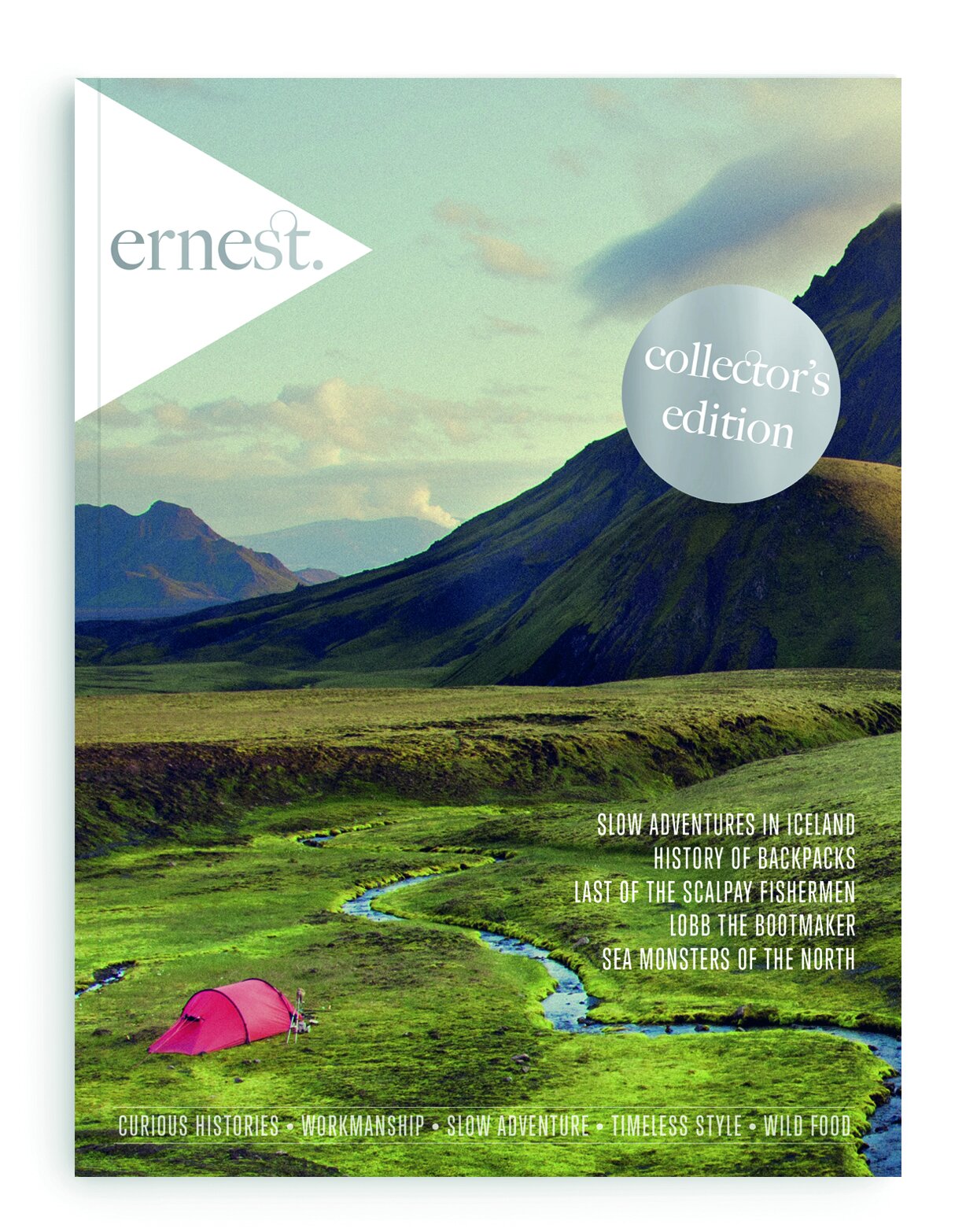We're almost there folks! Issue four of Ernest Journal explores the rather eclectic themes of sound, subversion and polar exploration. Read on for more about what's in store – then please pre-order your copy so we can post it out to you fresh from the printers, while it's still warm and inky...
24-page guide to Greenland
Seek out ancient Norse settlements; sail among icebergs while exploring the cultural impact of the great Ice Sheet and delve into Inuit folklore in South Greenland.
Curious histories
Listen to mysterious transmissions on short wave radio; delve into the darker side of tintype photography; investigate an anomaly in the North Sea – a micro-nation owned by a tenacious band of radio buccaneers; and read about Russian composer Alexander Scriabin, whose week-long symphony would bring about the end of the world.
Spaces
Step into the unconventional home of wallpaper designer Adam Calkin and enter the bizarre and wonderful world of sound design.
Slow adventure
Investigate the psychology of polar exploration; discover the secrets of Schiehallion, the Scottish mountain that helped us weigh the world; and explore the evolution of travel writing from the 'unsentimental journey', through Victorian authors and the Beats to situationism and psychogeography.
Workmanship
Forage for the raw ingredients needed to blow your own glass; meet an automaton inventor and discover the obsessions and frustrations of model boat makers.
Timeless style
Wear woollens inspired by the Heroic Age of Polar Exploration; discover the origins of the trench coat, from the front line to the silver screen; and forage for ingredients to create your own wild dyes.
Wild food
Venture into the marshes of northern Norway in search of elusive cloudberries and master the art of wild meat butchery.










































